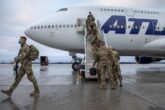August 30, 2021
What Is Known About ISIS-K Funding in Afghanistan?
The horrific Aug. 26 complex attack against Afghan civilians and U.S. Marines at the Kabul airport has put international attention on the Islamic State in Khorasan (ISIS-K), a relatively small and obscure offshoot of the Islamic State of Iraq and Syria (ISIS-Core). The attack raised an important question about the group’s capabilities to conduct further attacks against U.S. interests, both in Afghanistan and abroad.
In the aftermath of the attack, focus will naturally fall to questions about the group’s leadership and organizational structure. But to fully understand the group and disrupt future terrorist attacks, policymakers must recognize how the group raises revenues to fund its activities as well as steps already taken by the international community.
The Taliban’s takeover of the Afghan government creates serious difficulties for the U.S. and the international community to combat terrorism financing in general, and against ISIS-K in particular.
Public U.S. government assessments of ISIS-K fundraising provide the clearest picture of how the group raises money. According to the State Department’s most recent Country Report on Terrorism for Afghanistan, “ISIS-K, elements of al-Qa’ida, including affiliate AQIS, and terrorist groups targeting Pakistan, such as [Tehrik-i-Taliban, the Pakistani Taliban], continued to use the Afghanistan-Pakistan border region as a safe haven.” While ISIS-K had a presence along the mountainous border between Afghanistan and Pakistan, Afghan government forces and the Taliban displaced ISIS-K from strongholds in the region in 2019. These efforts deprived ISIS-K of revenue from natural resource extraction, including lucrative talc mines in Nangarhar, as reported by the NGO Global Witness in 2018.
Without these mineral and smuggling revenues,, “ISIS-K primarily raises funds through local donations, taxation, extortion, and some financial support from ISIS-core …. As of early 2020, ISIS core was possibly providing some funds to ISIS-K,” according to a 2021 Treasury Department report. But the group hasn’t always had this funding model. The 2021 Treasury Department assessment represents a change from a 2019 State Department Counterterrorism Bureau report that stated, “ISIS-K receives some funding for ISIS. Additional funds come from illicit criminal commerce, taxes, and extortion on the local population and businesses.” A Sept. 2020 Wall Street Journal article identified ISIS affiliates generating income through “illicit tobacco markets” in Afghanistan and Pakistan.
Read the full article from Lawfare.
More from CNAS
-
A Failure to Plan: Examining the Biden Administration’s Preparation for the Afghanistan Withdrawal
Afghanistan, Iraq, and Vietnam. One failure is a horrible accident; two failures are a tragic coincidence; three failures are a disturbing trend that shows the U.S. government...
By Christopher D. Kolenda
-
Against All Odds
Eighteen months after taking power, the Taliban is intensifying its repression of Afghan civil society and cracking down on the rights and freedoms of all Afghans, especially ...
By Lisa Curtis, Annie Pforzheimer & Jan Mohammad Jahid
-
To Help Afghanistan, Engage Its Political Opposition
The effort to help Afghans shape a better alternative should begin now....
By Richard Fontaine & Lisa Curtis
-
International Community Must Do More to Protect Human Rights in Afghanistan
Human rights in Afghanistan, especially those of women and girls, have deteriorated sharply during the first year of Taliban rule. The very real prospect of losing a generatio...
By Lisa Curtis, Annie Pforzheimer & Jan Mohammad Jahid



